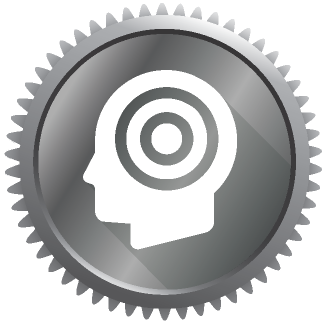Public Events > ERMS Series | RMIC Certification > Condition Monitoring Technologies



When
TBD
Duration
4 1/2 days of formal training
Where
Nissan Decherd Training Facility
520 Powertrain Dr.
Decherd, TN 37324
- Food and drinks will be provided during breaks and for lunch each day of training.
Nearby Lodging
Quality Inn
1838 Decherd Blvd.
Decherd, TN 37324
Hotel Registration Information
Best Western
1602 Dinah Shore Blvd
Winchester, TN 37398
Hotel Registration Information
Target Participants
ERMS has been carefully designed for anyone who has a role in reliability including:
- Production and Maintenance leaders, supervisors, engineers, and lead hands
- Reliability leaders, managers and engineers
Prerequisites
Preface
In this course, students develop a practical understanding of the most commonly applied condition monitoring methodologies. Asset Strategy Development principles are advanced to apply the right technology, at the right time and place and with the right person. Students return to the plant with the ability to more effectively communicate with condition monitoring personnel, assist in effective performance audits of the current asset base and suggest improvements to monitoring strategies.
Objectives
The course begins with a practical view and a sequential approach to managing asset reliability risk with correct analysis techniques, problem resolution and correct documentation application. Students are presented with predictive technology condition monitoring analysis and field utilization techniques for vibration, ultrasound, infrared and oil analysis. Then, students are prepared with detailed condition assessment information and site application observation questions to assist in the evaluation of current monitoring systems effectiveness and efficiency. Finally, tips, tricks and ideas as how to best improve these various program results are presented.
Attendees return to the plant with the ability to more effectively communicate with condition monitoring personnel, assist in effective performance audits of the current asset base and suggest improvements to monitoring strategies.
Processes Covered
Subjects include but not limited to:
Condition Monitoring
- Machine Failure Assumptions
- Failure Development Curve
- Causes of Machinery Failure
- Problem: Detection, Investigation and Analysis
- Resolve: Correction and Improvement
- Document: Maintaining and Measuring Work Results
- Visual, Audible and Tactile Inspections
Vibration Analysis
- Detection and Analysis Overview
- Terminology: Amplitude, Frequency, Phase, Severity and Resonance
- Data: Acquisition, Instruments, Transducers and Location
- FFT: Principles and Process
- Analysis Application Sequence: Machinery Information and Data Interpretation
Ultrasonic Utilization
- Technology, Terminology and Principles of Operation
- Typical Applications: Compressed Air/Gas, Steam Traps and Valves, Electrical, Bearing Failure Detection and Lubrication
- Vital Program Components: Collection, Analysis, Reporting and Common Challenges
Practically Applying Infrared
- Introduction and Technology Overview
- Principles of Operation
- Sources of Error and Limitations
- Understanding: Spot Size, Emissivity, Ambient Conditions and Common Misconceptions
- Types Available and Typical Applications
Oil Analysis
- Purpose of Lubricants, Types of Friction and Lubrication Films
- Understanding Lubricant Properties: Viscosity, Ph, Oxidation, Pour Point, Water Separation, Color, Bases and Additives
- Overview of Analysis Practices: Sampling, Field, Laboratory and Commercial Testing
- Cleanliness: Practical Standards and Measurements
Applying PdM Technologies
- Common Machinery Faults and Application Enhancements: Misalignment, Unbalance, Resonance, Bearing Defects, Journal Style Bearings, Looseness, Flow and Electrical Problems
- Determining Machinery Problems - Primary and Secondary Technologies: Motors, Centrifugal Pumps, Fans and Blowers, Gear Drives and Compressors

